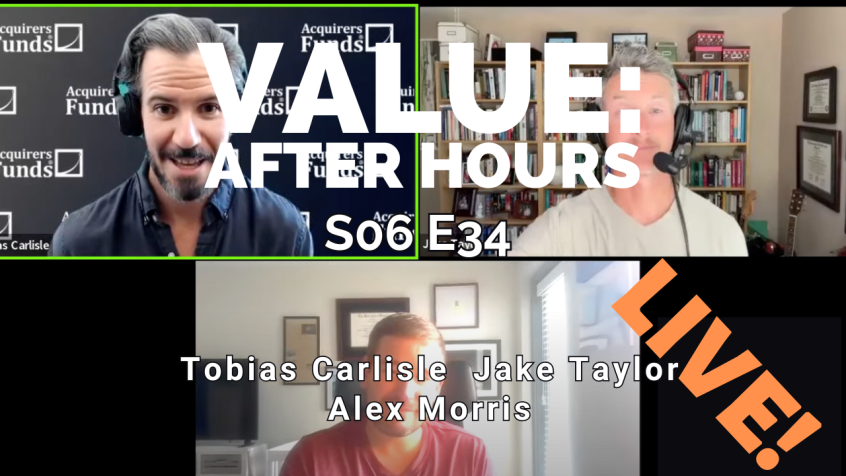During their recent episode, Taylor, Carlisle, and Alex Morris discussed The Hidden Danger of Weekly Data in Long-Term Investing Strategies. Here’s an excerpt from the episode:
Alex: One thing that came to mind for me, as you’re saying this is and I’m thinking about the hibernation comment, and also, this wall of continual bad news over days, weeks, months, potentially years, it has me thinking about, in certain businesses, energy drinks is a great example where there’s this weekly scanner data that’s really reliable. Every single week, you’re getting another data point in terms of what’s going on in this business.
I can’t remember if I pulled this out of my latest write up or not, but the funny thing about those businesses, it makes the access to really good short-term reliable data makes thinking and acting long-term so much more difficult. It’s almost like you’d rather the data not exist. You’d be forced to hibernate for lack of a better term in terms of the data that you’re actually getting. But it’s more information. It’s having more knowledge. But it’s hilarious that it’s ironic that translates into being able to think and act in long-term is so much more difficult in that situation just as a result of how that’s set up.
One other thing I thought of too, is as you were saying, I haven’t read it in a long time. I need to reread it, but there’s a book called The Great Depression: A Diary, and it’s from a gentleman who lived– I remember it, because my family’s from Youngstown, Ohio, and he was in Youngstown, but he details on it–
Jake: Benjamin Roth.
Alex: Yeah, there you go. So, it’s like day by day as I remember it, or at least weekly type of thing. It’s fascinating to read stuff like that where– Again, you can do this anytime for a stock, like zoom out. You can’t even see that random 30% drop in there over a six-week period. But if you owned it during that period, you sure as hell remember it when it happened. [chuckles] It feels very different when it’s happening versus zooming out and looking at the long-term Monster stock chart.
Tobias: It’s funny looking at it at a market level. You see the same thing. 2007 to 2009, it’s a blip.
Jake: Well, there’s a huge difference between behavioral time and chart time. Like, actually living through something versus looking at it on the chart.
Alex: It makes me think too of you think about corporate actions most notably in terms of repurchases and whether or not– They almost certainly would benefit from self-imposed hibernation or some thoughts on. This is incredibly difficult to do for a ton of reasons. One, just even figuring out the number, but two, also the outside pressures that you have as a CEO of your average, whatever public company. You would think that makes some sense to have some sense of, “Here’s normalized profitability or cash flow when we go up or below that in a very significant way, we should adjust our behavior accordingly,” which is much easier to say to do than to actually do, but you see what the outcomes look like when you don’t do that and just lean into what the tides are giving you at any given moment, it leads to very bad outcomes on average.
You can find out more about the VALUE: After Hours Podcast here – VALUE: After Hours Podcast. You can also listen to the podcast on your favorite podcast platforms here:
For all the latest news and podcasts, join our free newsletter here.
Don’t forget to check out our FREE Large Cap 1000 – Stock Screener, here at The Acquirer’s Multiple:



